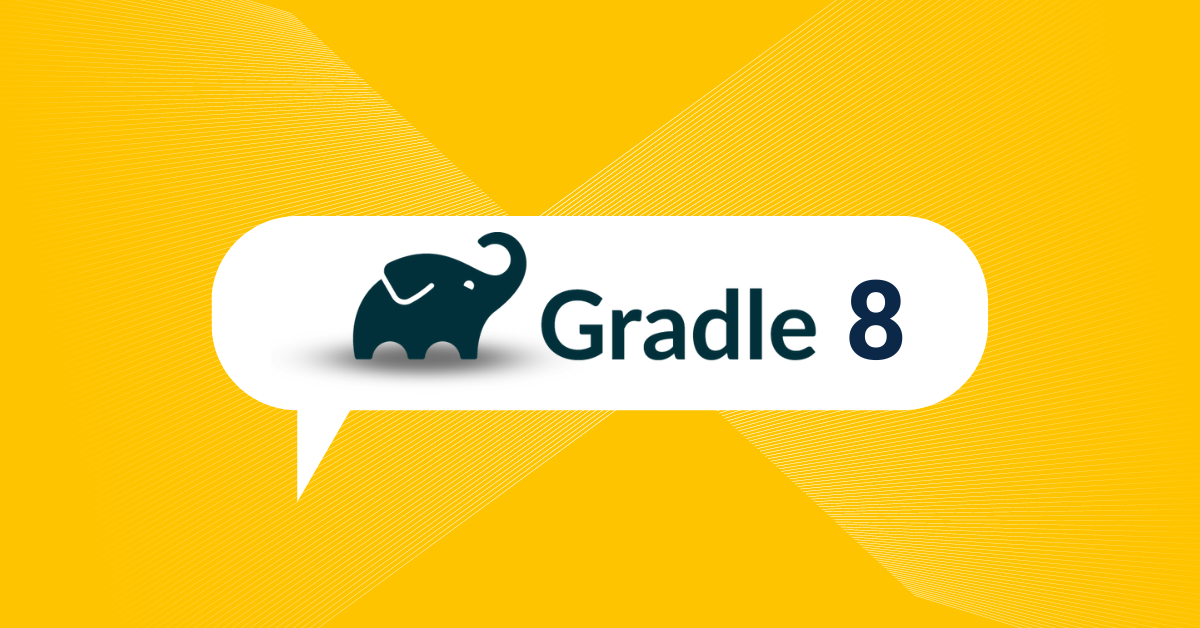
Automation becomes more vital to coding practices with each passing year. The reasons are manifold given the right automation tools: boost productivity, reduce human error, and increase the speed and quality of code production.
For many developer teams, Gradle is an indispensable tool, and in February 2023, they released their newest version: Gradle 8. Below is a brief overview covering the new release and explaining how these updates help coders better create and manage code.
Gradle is a multi-language, open-source build tool designed to automate projects in languages like Java, Groovy, Scala, and Kotlin. After its 2008 release, it became a revolutionary tool, as it improved the software development lifecycle by automating tasks, including:
So, how does Gradle work exactly?
First, developers define project configurations using Gradle’s flexible Domain-Specific Language (DSL). Here, the tool takes a declarative approach, allowing for concise and readable scripts. After defining the project, developers use Gradle to manage and maintain project dependencies and ensure task completion while minimizing build times.
With features like task caching and build scans, Gradle enhances performance and offers detailed insights regarding the build process. Ultimately, it’s a modern code developer’s dream, powerful and easy to use. Now, with Gradle 8, the functionality and benefits multiply exponentially.
Gradle 8 introduces many performance improvements, enhanced dependency management, and stronger support for building large-scale projects. Additionally, the updates are Java-ecosystem compatible, supporting the latest Java versions and providing seamless integration across diverse technologies.
Overall, Gradle 8 empowers developers with a robust and efficient build system for modern software development.
With over 15 million monthly downloads, Gradle is one of the most popular automation tools. Gradle 8 builds on the tool’s historic success, delivering the benefits necessary for high-quality and high-volume code production in the modern age.
Here are nine of the top benefits of downloading the new updates.
The best automation tools are fast, reliable, and secure. Gradle 8 delivers on all fronts, improving its prior configuration time without sacrificing quality.
Updated task caching allows Gradle to cache the results of previously executed tasks and reuse them if inputs and outputs remain unchanged. This feature accelerates build times by eliminating the need to re-execute tasks and is most useful when developers build repeat projects with minimal code changes.
Gradle 8 introduces enhanced dependency management capabilities. It offers a more efficient mechanism for resolving and handling dependencies through various improvements, including:
Compared to Gradle 7, the dependency resolution engine is optimized to reduce build times and resource usage. Better dependency management is beneficial for large-scale projects with complex dependency graphs, leading to faster and more reliable builds.
Java compilation is a highlight feature of Gradle 8. Now, developers can leverage Gradle’s incremental compiler to combine Java source files with greater speed.
In previous versions, users had to undergo full recompilations whenever after changing even a single constant. Now, Gradle 8 offers constant usage tracking to help speed up incremental builds. This is especially handy for projects containing many constants.
Additionally, Gradle 8 supports the latest Java toolchain versions, ensuring compatibility with the evolving language features. It offers a unique toolchain resolver plugin, allowing users to exercise more control over developments, and optimizing build times by intelligently reusing previous compilations when inputs remain unchanged.
Regarding usability, Gradle 8 streamlines test suite management by offering robust support and plugins that allow users to test frameworks more granularly across diverse projects.
Updates allow developers to break down test classes, which leads to easier management and modification as you work through the project pipeline.
Build scans provide detailed insights into the build process, such as task execution times, dependencies, and plugin usage.
Gradle 8 optimizes build scan inspection capabilities, making it an even more powerful tool for analyzing and optimizing build performance.
This feature allows developers to collaboratively generate and share build scans to diagnose issues. Overall, it’s a crucial feature for identifying bottlenecks and improving pipeline efficiency across teams.
Gradle 8 continues improving its first-class support for Groovy and Kotlin DSLs (domain-specific languages). Here, developers can choose the language that best suits their preferences and project requirements.
Additionally, Gradle 8 is compatible with the latest Java versions, allowing developers to take advantage of the newest language features and improvements.
Gradle 8 makes it much easier for developers to integrate and configure project plugins. The updated plugin mechanism enhances consistency and provides a more user-friendly experience through automatic detection. Also, heightened plugin management extends the functionality of their builds with third-party plugins or custom configurations.
Gradle 8 updates its build logic execution model to support faster configuration times and more reliable builds. The updated version also leverages parallelism and is isolated from the build tool’s code, enhancing the stability and predictability of the build process. Ultimately, better logic execution results in smoother development and reduces the likelihood of unexpected issues during builds.
Lastly, Gradle 8 strongly emphasizes user experience, with improvements in documentation, error messages, and overall usability. The goal is to provide developers with clear and concise information, making it easier to understand and troubleshoot any issues during the build process.
Looking for the best-in-class application protection for Java? Consider PreEmptive’s DashO. The latest version fully supports Gradle 8 so you can seamlessly plugin DashO to unlock Gradle’s productivity benefits while harnessing our top-notch obfuscation tools and impeccable customer support.
See for yourself. If you’re interested in giving DashO a try, feel free to sign up for a free 14-day trial!